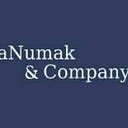How can leaders accelerate long-term objectives despite unpredictability?
Uncertainty is always present. From time to time, we witness the effects of uncertainty more prominently due to internal changes throughout an organization or globally. Due to the ever-present nature of fate, managers are faced with the dilemma of the best way to lead to accelerating long-term goals when there is no idea of what will happen next. Amid looming uncertainty, leaders who know how to maintain, assess, or change priorities for both short and long terms are best positioned to accelerate the goals of an organization.
The looming presence of uncertainty that can strike at any time requires a dynamic strategy that anticipates disruptions to a company’s operations. A system defines a future of an organization. An active approach, therefore, can respond to probabilities that may arise due to internal and external changes brought on by uncertainty.
Anticipating market changes
A vital pillar of a dynamic strategy involves anticipating market changes. Suppose organizations can make competitive insights into fundamental market forces, drivers of change and development, trends in technology advances, and other market disruptions. In that case, they will be in a better position for leaders to craft sustainable long-term goals and accelerate those goals in anticipation of uncertainty.
Utilizing technology
To anticipate and address uncertainty, organizations should utilize technological advancements to assist leaders in creating long-term solutions. This is because technology allows for comprehensive goal setting and tracking, including monitoring key metrics and leading indicators for businesses. In addition, the acceleration of technology requires leaders to accelerate a company’s use of technology.
Strengthening leadership
Another area where leaders can focus attention to accelerate long-term goals amidst uncertainty is strengthening future leadership. This ensures the continuity of the organization’s board vision and mission by safeguarding shared values, culture, and purpose. For example, suppose an organization can either cultivate or acquire leadership talent with expertise in risk management. In that case, that organization stands to weather the storms of uncertainty better than an organization that does not. Risk management involves aligning executive decisions with a company’s purpose and culture. This alignment is integral to maintaining a common long-term goal.
An essential part of leadership in times of uncertainty concerns the communication of that uncertainty within the organization. For example, during times of uncertainty, organizations often have difficulty retaining their workforce. This is detrimental to both the short and long-term success of an organization. Leaders can, however, remedy this occurrence by addressing the concerns of employees, namely how long the disruptions may last, what path the organization will take, when changes might happen, and probably the outcomes of those changes.
Conclusion
One of the most recent magnifiers of uncertainty has undoubtedly been the COVID-19 pandemic. Perhaps no one could envision the magnitude of the adverse impacts caused by the pandemic. However, as dynamic strategic planning can anticipate market changes, help formulate investment planning, and enable performance monitoring, uncertainty often curtails the best efforts at accelerating long-term goals. However, the saying “if you don’t plan, you plan to fail” has some merit. This certainly carries over into workplace culture, where leaders must determine a strategic plan to accelerate long terms goals even amidst uncertainty.
